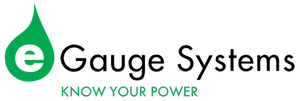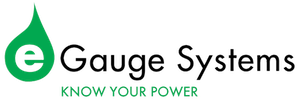Accurate energy metering is essential for effective energy management, whether in commercial facilities, multi-tenant residential buildings, industrial settings, or research environments. However, even the most advanced metering systems can be compromised by a common issue: human error during installation and configuration.
Smart CT (current transducer) technology, particularly sensor identification systems like eGauge System’s patented CTid technology, offers a practical solution by minimizing manual setup and reducing opportunities for misconfiguration. This article takes a closer look at how embedded intelligence in sensors is improving accuracy, efficiency, and reliability in energy monitoring.
Common Challenges in Traditional CT Configuration
In traditional energy monitoring systems, CTs must be manually configured to match the specifications of the meter. This typically involves selecting the correct sensor model, inputting ratings, and ensuring that each CT is connected to the correct port. These steps are often completed in the field and may rely on installation notes, labels, or educated guesswork, especially in complex or high-density setups.
This manual process leaves room for several types of error:
- Selecting the wrong CT model or amperage rating
- Mislabeling or misidentifying sensor connections
- Switching leads between ports without realizing it
- Overlooking configuration mismatches until after data is collected
These kinds of errors can affect data accuracy, complicate system troubleshooting, and lead to wasted time and resources.
What CTid Technology Does Differently
CTid, a patented technology developed by eGauge Systems, is designed to address these challenges through embedded sensor intelligence. Each CTid-enabled sensor contains a chip that stores essential identification data, such as:
- Model
- Serial number
- Amperage rating
- Sensor type and configuration information
When these sensors are connected to a compatible eGauge meter (such as the EG4xxx series), the meter automatically reads this information and applies the correct settings. Instead of manually selecting the CT model, the system scans connected ports and recognizes the sensor directly.
This eliminates the need for traditional configuration via drop-down menus and significantly reduces the chances of human error.
Improving Sensor Identification in the Field
In larger or more complex installations, it can be difficult to track which sensor is connected to which input, especially when multiple sensors are routed through conduit or if labeling has been lost or confused.
CTid sensors include a locator LED that can be activated from within the eGauge interface. This feature allows users to visually confirm sensor connections without manually tracing wiring, which is particularly helpful during commissioning, audits, or maintenance.
Implications for the Industry
The move toward embedded sensor intelligence is part of a broader trend in metering and building automation systems: increasing automation, reducing manual steps, and enhancing data reliability. Smart CT technologies like CTid support:
- Faster, reliable installations
- Simplified maintenance and troubleshooting
- More consistent long-term system performance
As more organizations adopt real-time monitoring to manage energy use, reduce costs, and support sustainability goals, technologies that streamline deployment and improve data quality will play an increasingly important role.
Final Thoughts
The accuracy of an energy monitoring system begins with its sensors. By reducing the possibility of configuration errors and improving traceability in the field, smart CT technologies are helping to improve both the reliability and usability of metering systems. As these tools become more widely available, they’re setting a new standard for how energy data is collected and trusted.















